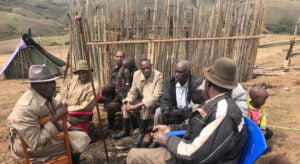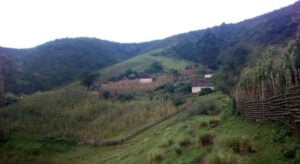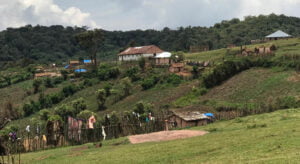The Banyamulenge is a tribe or community that is part of more than 400 tribes that make up the Congolese people. This reality is such that since the partition of Africa during the Berlin conference of 11/15/1884 to 02/26/1885 which gave birth to the creation of the Independent State of Congo (EIC), in its final borders in 1910.
 The Banyamulenge are widely considered to belong to the Tutsi or Nilotic group of the Great Lakes region of Africa. Like all other ethnic groups living in the eastern region of the DRC and particularly the province of South Kivu, the Banyamulenge experienced migration to the current DRC before the division of Africa down from the North-East or east to where they are today.
The Banyamulenge are widely considered to belong to the Tutsi or Nilotic group of the Great Lakes region of Africa. Like all other ethnic groups living in the eastern region of the DRC and particularly the province of South Kivu, the Banyamulenge experienced migration to the current DRC before the division of Africa down from the North-East or east to where they are today.
The Banyamulenge are located in the eastern part of the Democratic Republic of Congo (DRC), in the province of South Kivu in four administrative entities called territories including UVIRA, FIZI, MWENGA, and WALUNGU. Since their arrival between the 16th and 18th centuries according to several sources which agree, they headed for the Hauts Plateaux of Uvira-Fizi-Itombwe which constitute the intersection of these administrative entities.
Before the violence of 2017 and the systematic raid impoverished almost all members of the Banyamulenge community, their economy had essentially been the herding of cattle known as cows which were estimated in terms of the thousands. In South Kivu, pasture areas are common to surround villages and families. In principle, agriculture was a low-income economic activity, but gradually it became parallel to cattle breeding and together these two activities constitute their economic and social foundation. However, by herding culture that dates back thousands of years, the cow position is also symbolic.
For centuries, the Banyamulenge have lived in good neighborly relations with other tribes including the Batwa, Babembe, the Bafuliro, the Banyindu, the Bavira, the Bajoba, the Masandje, Babuyu. The socio-economic exchanges had been important between the tribes but also the cohabitation had always been peaceful. It was after the independence of the DRC, especially during the outbreak of the Mulelist rebellion of 1964, relations deteriorated. The political manipulations that followed the events of the Mulelist rebellion not only soured relations between ethnic groups at the local level but also led to and reinforced the discrimination of Banyamulenge within the national political arena. Things got more complicated with the advent of democratization in 1990 and the involvement of political issues in the Great Lakes sub-region of Africa.
 Despite the vulnerable position of the Banyamulenge which originated in colonial history and was finally long manipulated to the point that the Banyamulenge are contested and seen as “invaders” inside the territory of their ancestors, their current situation precisely since 2017 has become more worrying than ever. Since 2017, we have witnessed a form of violence that targets Banyamulenge members, completely burning down their localities, destroying their economy, and laying siege to small localities regularly attacked by a large coalition of local and foreign armed groups. These attacks are accompanied by hate speech and calls for the extermination of Banyamulenge propagated by social media. This umpteenth phase of violence carries high risks of leading to genocide against the Banyamulenge and their erasure from the map of the DRC.
Despite the vulnerable position of the Banyamulenge which originated in colonial history and was finally long manipulated to the point that the Banyamulenge are contested and seen as “invaders” inside the territory of their ancestors, their current situation precisely since 2017 has become more worrying than ever. Since 2017, we have witnessed a form of violence that targets Banyamulenge members, completely burning down their localities, destroying their economy, and laying siege to small localities regularly attacked by a large coalition of local and foreign armed groups. These attacks are accompanied by hate speech and calls for the extermination of Banyamulenge propagated by social media. This umpteenth phase of violence carries high risks of leading to genocide against the Banyamulenge and their erasure from the map of the DRC.

